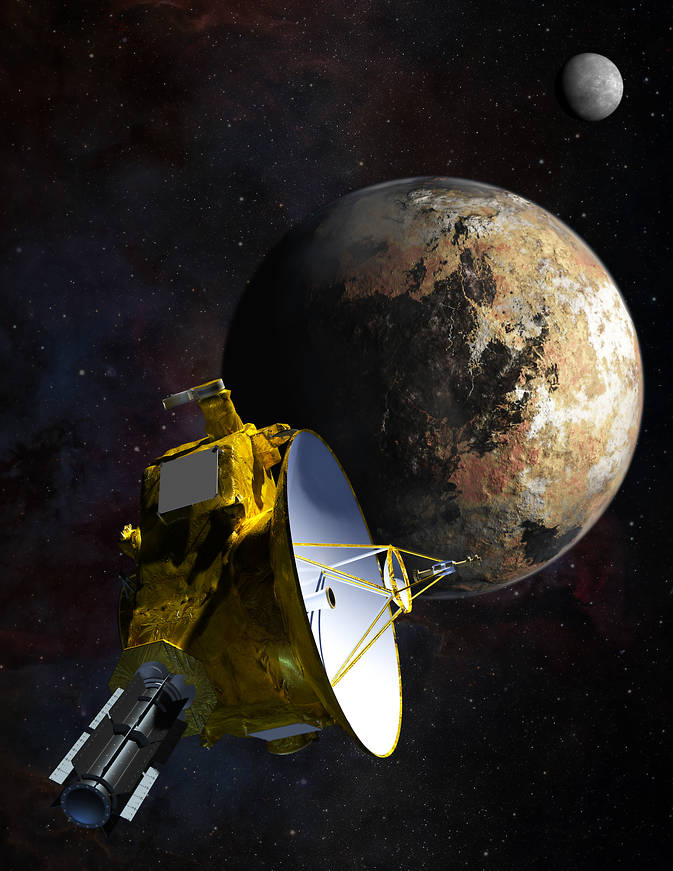By Jaston Binala.
You are probably an astrophysics fan or an actual astrophysicist if you are reading this article. I don’t blame you. There is a very interesting astrophysics issue here.
The American National Aeronautics and Space Administration (NASA), the US government agency responsible for that country’s civilian space program, wants you to participate in a rare opportunity to suggest names of places on a planet!
A press statement made available to TZ Business News on Easter Monday, 2015, invites the general public all over the world to suggest names of places on the most distant planet on the solar system—Pluto; now I realize there is a little debate going on about whether Pluto is a planet or something else, but, for purposes of this little article, I am going to call Pluto a planet! Take it with a grain of salt of course.
Anyway, what I am about to tell you down here now is all FACT. NASA has asked all of us to suggest names of places on Pluto. A spacecraft which left earth in 2006 will be very close to Pluto in mid-July of this year 2015, and it will be taking photographs which will show things we’d never seen before; we will be able to see the new images some 4.5 hours after they were taken from that distance of 4.67 billion miles away from earth (7.5 billion kilometers).
By the way, I am using that pronoun ‘we’ above in the hope NASA will share those photos with the rest of us in July.
The spacecraft is currently running at 31,000 miles per hours. The photos it will be sending back to earth will reveal features of the smallest planet on the solar system we could not see from earth and NASA wants the world community to suggest names of those places to be seen in July.
Ok NASA–here is my suggestion: If you should find a huge crater on Pluto, please, please call it MBOZI CRATER (Pronounce m~bow~zee crater). Why? Come on…let’s have something African on Pluto! Two, Mbozi is located in Southern Tanzania and is one of few places on planet earth with an object from outer space-The Mbozi Meteorite. Mbozi is associated with outer space in that way. Mh…think about it…Mbozi Crater! Sounds cute too, doesn’t it?
Now I shouldn’t be selfish about this opportunity. To find out more information about how to participate in the Pluto naming contest, visit this link here: Detailed guidelines for acceptable names submissions are available online at the link here: The NASA press release follows:
The public has until Friday, April 24, 2015 to help name new features on Pluto and its orbiting satellites as they are discovered by NASA’s New Horizons mission.
Announced in March, the agency wants to give the worldwide public more time to participate in the agency’s mission to Pluto that will make the first-ever close flyby of the dwarf planet on July 14, 2015.
The campaign extension, in partnership with the International Astronomical Union (IAU) in Paris, was due to the overwhelming response from the public.
“Due to increasing interest and the number of submissions we’re getting, it was clear we needed to extend this public outreach activity,” said Jim Green, director of NASA’s Planetary Science Division at the agency’s headquarters in Washington. “This campaign not only reveals the public’s excitement about the mission, but helps the team, which will not have time to come up with names during the flyby, to have a ready-made library of names in advance to officially submit to the IAU.”
The IAU is the formal authority for naming celestial bodies. Submissions must follow a set of accepted themes and guidelines set out by the IAU’s Working Group for Planetary System Nomenclature. After the campaign concludes, NASA’s New Horizons team will sort through the names and submit its recommendations to the IAU. The IAU will decide whether and how the names will be used.
The campaign allows the public of all ages to submit names for the many new features scientists expect to discover on Pluto following the encounter.
“I’m impressed with the more than 40,000 thoughtful submissions,” said Mark Showalter, scientist New Horizons science team co-investigator, and SETI Institute in Mountain View, California, which is hosting the naming website. “Every day brings new lessons in the world’s history, literature and mythology. Participation has come from nearly every country on Earth, so this really is a worldwide campaign.”
New Horizons already has covered more than 3 billion miles since it launched on Jan. 19, 2006. Its journey has taken it past each planet’s orbit, from Mars to Neptune, in record time, and now it’s now in the first stage of an historic encounter with Pluto that includes long-distance imaging, as well as dust, energetic particle and solar wind measurements to characterize the space environment near Pluto.
The spacecraft will pass Pluto at a speed of 31,000 mph taking thousands of images and making a wide range of science observations. At a distance of nearly 4 billion miles from Earth at flyby, it will take approximately 4.5 hours for data to reach Earth.
The Johns Hopkins Applied Physics Laboratory (APL) manages the New Horizons mission for NASA’s Science Mission Directorate in Washington. Alan Stern, of the Southwest Research Institute (SwRI), is the principal investigator. SwRI leads the science team, payload operations and encounter science planning. New Horizons is part of the New Frontiers Program, managed by NASA’s Marshall Space Flight Center in Huntsville, Alabama. APL designed, built and operates the spacecraft for NASA.





